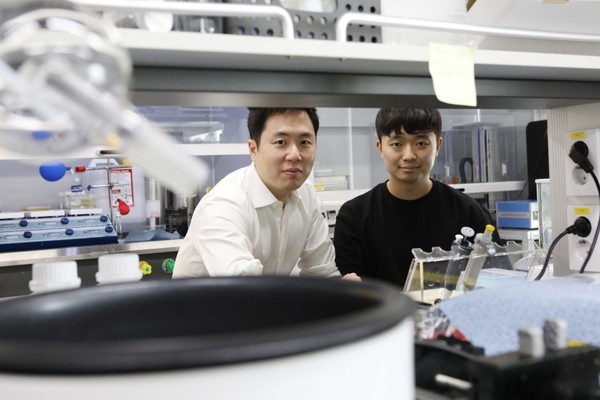A research team led by Professor Steve Park’s research group has successfully developed an artificial skin technology that exhibits low hysteresis and high uniformity. Professor Park, from the Department of Materials Science and Engineering, collaborated with research groups led by Professor Jung Kim, from the Department of Mechanical Engineering, and Dr. Joo Yong Shim, from the Electronics and Telecommunication Research Institute (ETRI), to develop an improved pressure sensor.
The results of the research were published in the August 16 edition of Small, an international scientific journal that covers nanotechnology. The project was led by Jinwon Oh, an MS degree candidate in Professor Park’s research group.
As applications of flexible sensors in healthcare technology gain more attention, interest in artificial skin has grown. A variety of attempts to increase the sensor sensitivity, measurement range, and responsivity have been made to increase the overall performance of artificial skin technology.

However, obstacles to the commercialization of artificial skin are the high sensor-to-sensor variability, which is a result of the fabrication process, as well as the high hysteresis of its sensors. Hysteresis occurs when prior events affect the current state of the system. An ideal sensor would provide identical readings for equivalent events.
Professor Park’s research group has provided a novel solution to this issue by utilizing chemical grafting with uniform pore size. The uniform fabrication of polymer microstructures with pores caused a decrease in structural sensor-to-sensor variability. A subsequent coating of the microstructures via chemical grafting resulted in a conductive polymer coating, causing an increase in functional uniformity. The strong covalent bond between the conductive polymer and polymer microstructures also resulted in a decrease in hysteresis.
Professor Park commented that “This new method of creating sensors with low hysteresis and high uniformity will be key in allowing for the commercialization of artificial skin”.

